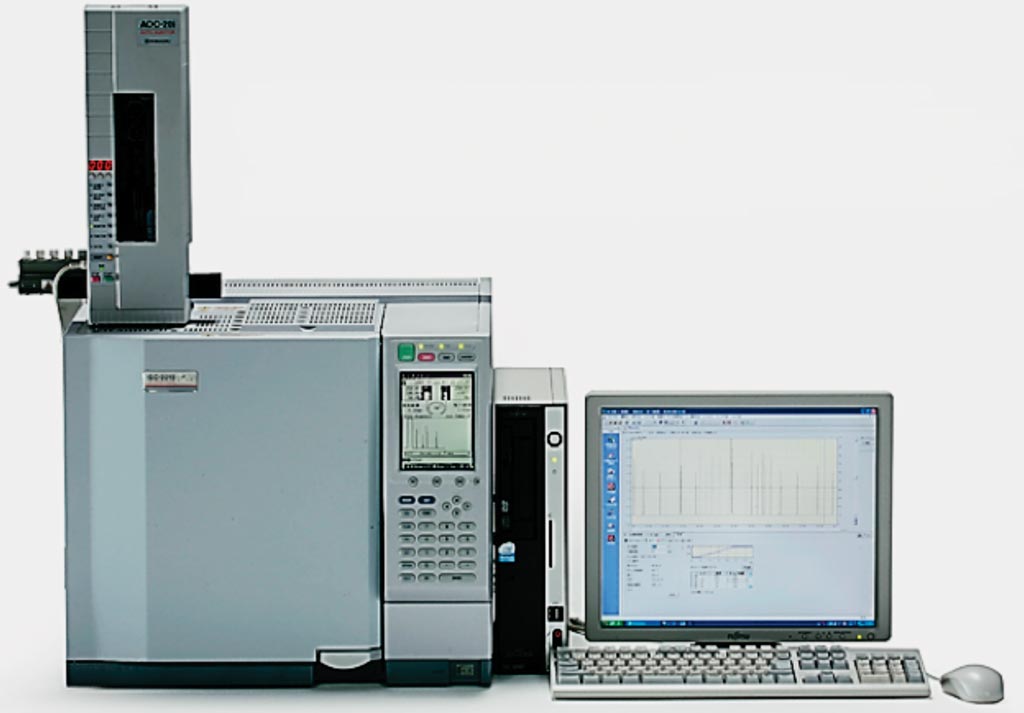Omega-3 Levels Predict Death Risk Better Than Serum Cholesterol
By LabMedica International staff writers
Posted on 27 Mar 2018
The value of measuring blood levels of eicosapentaenoic acid (EPA) and docosahexaenoic acid (DHA) omega-3 fatty acids to assess an individual's risk for developing certain disease has been investigated.Posted on 27 Mar 2018
EPA and DHA, called for simplicity the Omega-3 Index, have been proposed as a risk factor for death from cardiovascular disease (CVD). Consistent with these observations, there is an inverse relationship between the Omega-3 Index and the rate of telomere attrition, a marker of cellular aging.

Image: The GC-2010 gas chromatograph used for calculating the Omega-3 Index (Photo courtesy of Shimadzu).
Scientists at the Sanford School of Medicine (University of South Dakota, Vermillion, SD, USA) and their colleagues measured in 2,500 participants in the Offspring cohort of the Framingham Heart Study the EPA+DHA content of red blood cell membranes (Omega-3 Index). All of the individuals in present study were free of known cardiovascular disease (CVD) at baseline. The team primarily focused on total mortality (death from any cause) as an endpoint, but also tracked death from CVD, cancer and other causes. The population was 66 years of age at baseline and there were a few more females than males. The study followed these individuals for disease outcomes until about age 73.
Blood was drawn after a 10- to 12-hour fast into an EDTA tube, and red blood cells (RBCs) were separated from plasma by centrifugation. The RBC fraction was frozen at −80 °C immediately after collection. RBC fatty acid (FA) composition was determined. Briefly, RBCs were incubated at 100 °C using boron trifluoride methanol and hexane to generate FA methyl esters that were then analyzed by gas chromatography with flame ionization detection. N-3 FAs analyzed included α-linolenic acid (ALA; 18:3n3), EPA (20:5n3), docosapentaenoic acid (DPA; 22:5n3), DHA (22:6n3), and the Omega-3 Index (EPA + DHA).
The scientists reported that a higher Omega-3 Index was associated with a lower risk for total CVD events, total coronary heart disease events, and total strokes. The category most strongly associated with the Omega-3 Index was non-CV, non-cancer deaths, that is deaths from all other causes. This would suggest a wide spectrum of beneficial actions of EPA and DHA in the body that are not just linked with one pathological process like plaque buildup in arteries.
William S. Harris, PhD, the lead author of the study, said, “We all know that the serum cholesterol level is a major risk factor for CHD, and since the latter is a major cause of death in the Western world, it would be reasonable to expect that a high cholesterol level would portend higher risk for premature death. This did not turn out to be the case here. When baseline serum cholesterol levels were substituted for the Omega-3 Index in the same multi-variable models, the former was not significantly associated with any of the tracked outcomes whereas the latter was related to four of the five outcomes assessed.” The study was published online on February 24, 2018, in the Journal of Clinical Lipidology.
Related Links:
Sanford School of Medicine









 assay.jpg)



